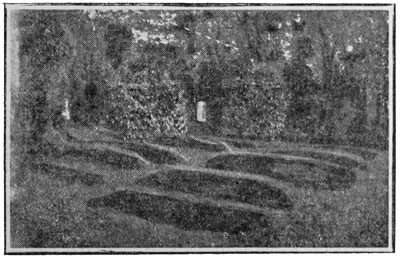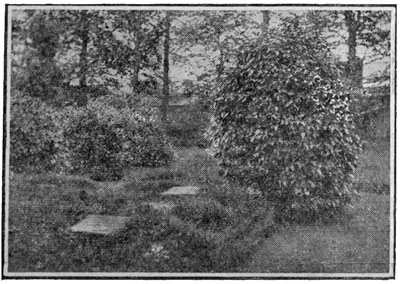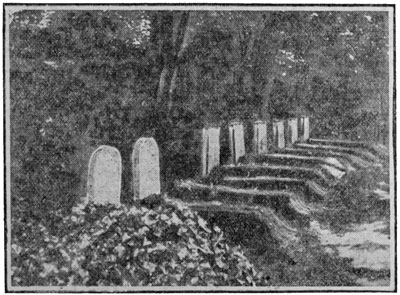Belfast Evening Telegraph, Tuesday, December 11, 1906
VI -- The Friends' Burying-Ground
I do not suppose there are many people about Belfast - other than those who are especially interested in such subjects -- who could tell you right off where the community of Friends in the city bury their dead. It cannot be considered "old," and yet there is sufficient evidence in the little acre of ground at the back of the Malone Presbyterian Church on the Lisburn Road to show the progress of thought among a sect who are generally supposed to be the most conservative of all. It indicates also that the progress is well-determined and slow, so slow indeed that those who cavil may suggest that it has only succeeded in keeping it's adherents years behind the times. The wall which separates the ground from the highway looks, with its iron gate, quite modern, but once inside there is a quaintness which, without any additional data almost proclaims the principles of those who bury there. The most "advanced" style of memorial in this quiet corner is the very essence of simplicity compared with the elaborate monuments with which the generality of graveyards are thronged. And yet it has taken years upon years to work up to this simple slab. The progress has been exceedingly slow, and each advance has only been gained, as it were, after a strenuous struggle.
When the ground was being occupied for the first time the "Quakers" did not permit any notice or memorial of any kind to be put on the resting-place of their departed. The places were marked by a mound, and at head-quarters the record of the occupants was kept, but the outside world had no means of gratifying idle curiosity. From outside the gate a good view of quite a large number of these unnamed mounds may be seen, and in order to preserve the information I have taken a photograph of the section, although the grass is so delightfully green all over that it was almost impossible to show the shadows between.

Showing where tombstones where forbidden
Then came a period when a small flat stone was allowable. It was only about two feet square, and the inscription might not contain anything beyond the simple name, date of death, and age. I am pleased to be able to present a picture of this also, and I do not think anything could be more severe in its simplicity. The stone seems to accentuate the loneliness.

Showing where flat stones where allowed
Further progress was made, and a small upright slab of dark granite or sandstone was permitted. So plain was this that it did not in any way disturb the air of equality aimed at.
It may be stated that the reason first of all for prohibiting notices of any kind on the graves was that the leaders of the movement were of opinion that as all had been equal in life they should be equal in death; and although some progress was made in succeeding generations the same principle was strongly advocated, and the tombstones for a long period were all cut to the very same pattern. Then there came one who rebelled. One who considered his dead relation was worthy of more than a plain slab. There were wealthy people connected with the Society, but it was none of these who ventured to overstep the limits laid down by their brethren. No! It was left for a coachman, I believe, to introduce for the first time a white marble stone. Even then it was very plain, but those who could have afforded anything they fancied in this line restrained their tastes, and in order not to make their humble brother feel that he had offended simple white stones became the fashion.
The third photo which I present shows the change, and also shows that only one body is buried in each separate grave.

"A long line of Pims." Showing the change from the old granite stone to the white marble
This is a long line of "Pims," a family that has been closely connected with the advancement of our city, and that has been associated with every good work no matter what creed was particularly interested. And as one walks along the shady paths every stone seems to bear a familiar name. The rule about the simplicity of the inscription has, I think, been observed in every case except one. On this stone, there has been added a short verse of Scripture -- "In Thy presence is fulness of joy," Psalm xvi., 11, and surely no one will object. To anyone accustomed to the more ornate decorations in our public graveyards this plain little portion of God's acre will offer a striking contrast. No one expects the Friends to act as ordinary folk do, but while the modern members of the Society are quite in line with those of other creeds this relic of their ancient manners and customs brings up visions of the days when broad-rimmed hats and poke bonnets were badges of the sect.

